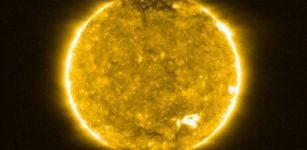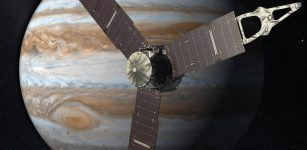InSight’s Landing On Mars: First Mission Dedicated To Studying Deep Interior Of Mars
MessageToEagle.com – A three-legged, one-armed spacecraft-geologist (InSight) will study MArs deep interior and listen for quakes.
NASA’s Mars Interior Exploration using Seismic Investigations, Geodesy and Heat Transport (InSight) lander is scheduled to touch down on the Red Planet at approximately noon PST (3 p.m. EST) on Nov. 26, and viewers everywhere can watch coverage of the event live on NASA Television, the agency’s website and social media platforms.

Launched on May 5, InSight marks NASA’s first Mars landing since the Curiosity rover in 2012. The landing will kick off a two-year mission in which InSight will become the first spacecraft to study Mars’ deep interior. Its data also will help scientists understand the formation of all rocky worlds, including our own.
One of InSight’s experiments is to attempt to penetrate 16 feet (5 meters) into Mars, using a self-hammering nail with heat sensors to measure Mars’ internal temperature. (compared to 8 feet (2 ½ meters) drilling by the Apollo moonwalkers nearly a half-century ago).
InSight will also measure moonquakes and carries the first seismometers to monitor for marsquakes—if they exist. Yet another experiment will calculate Mars’ wobble, providing clues about the planet’s core.
Why is InSight Landing at Elysium Planitia?
InSight will study the interior of Mars and take the planet’s vital signs, its pulse, and temperature. To look deep into Mars, the lander must be at a place where it can stay still and quiet for its entire mission. That’s why scientists chose Elysium Planitia as InSight’s home.
InSight is being followed to Mars by two miniature NASA spacecraft, jointly called Mars Cube One (MarCO), the first deep-space mission for CubeSats. If MarCO makes its planned Mars flyby, it will attempt to relay data from InSight as it enters the planet’s atmosphere and lands.
InSight and MarCO flight controllers will monitor the spacecraft’s entry, descent and landing from Mission Control at JPL.
Broadcast Schedule
All NASA TV news conferences will be available on the agency’s website at www.nasa.gov/live. Briefing times and speakers are subject to change. The public may ask questions on social media during the events by tagging them with #askNASA.
Wednesday, Nov. 21
- 10 a.m. PST (1 p.m. EST) – News conference: Mission engineering overview
- 11 a.m. PST (2 p.m. EST) – News conference: Mission science overview
Sunday, Nov. 25
- 10 a.m. PST (1 p.m. EST) – News conference: Final pre-landing update
- 1 p.m. PST (4 p.m. EST) – NASA Social: InSight team Q&A
Monday, Nov. 26: Landing Day
- 11 a.m. to 12:30 p.m. PST (2 p.m. to 3:30 p.m. EST) – Live landing commentary on the NASA TV Public Channel and online. In addition, an uninterrupted, clean feed of cameras from inside JPL mission control, with mission audio only, will be available at the same time on the NASA TV Media Channel, at www.nasa.gov/ntv and at https://www.youtube.com/user/JPLraw/live.
- About 12 noon PST (3 p.m. EST) – Expected time of InSight touchdown on Mars
- No earlier than 2 p.m. PST (5 p.m. EST) – Post-landing news conference
To watch news conferences and commentary online, you can also visit: http://www.youtube.com/nasajpl/live
A complete list of ways to watch online can be found at: https://mars.nasa.gov/insight/timeline/landing/watch-online/
MessageToEagle.com










